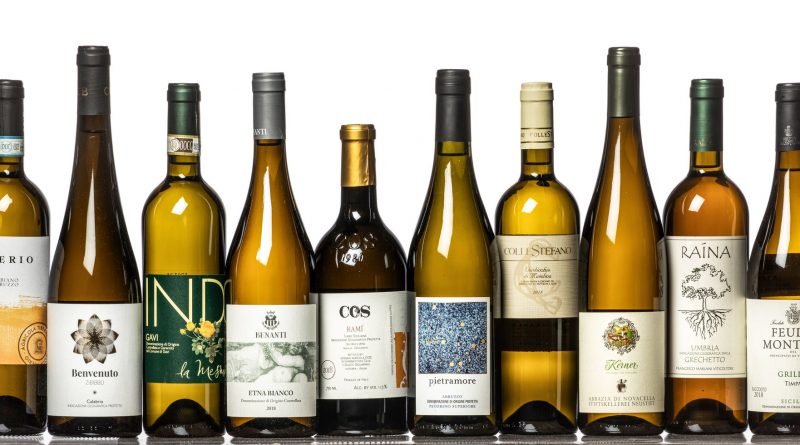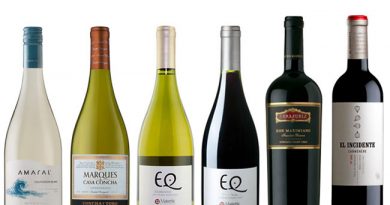The Diversity of Italy’s Wine Varieties
Italy is a land favored with the ideal conditions for grapes and wine. It has fairly changed scenes, with a landscape that highlights beach front precipices, profound valleys, and lakes, just as sun-doused fields, rough mountains, and delicately undulating slopes.
This excellent nation has an environment that movements however much the view, adding to apparently boundless microclimates that deliver an abundance of vegetation. This intricacy makes Italy one of the most grape-assorted nations on the planet and provides it with an unbelievable cluster of both native and took-on assortments.
For Italian wine epicureans or those basically inquisitive with regards to new grape assortments, there is a lot to find inside Italy’s boundaries. We should investigate the variety of Italy’s wine grapes.
Italy’s Wine Regions
Within excess of 350 approved grape assortments across 20 wine areas, Italy is a land that continues to give. Its rich wine history goes back over 3,500 years, with old roots reaching out from Calabria to Emilia-Romagna and then some.
Northern wine areas include:
- Aosta Valley
- Piedmont
- Lombardy
- Liguria
- Trentino-Alto Adige
- Emilia-Romagna
- Veneto
- Fruili-Venezia Giulia
The focal wine areas are:
- Tuscany
- Umbria
- Abruzzo
- Marche
- Lazio
Southern wine areas include:
- Campania
- Calabria
- Molise
- Puglia
- Basilicata
- Sardegna
- Sicily
Each wine area has its own environment, terroir, and winemaking style, so a similar grape assortment might taste totally different in two particular districts. Indeed, even from one maker to another, every grape might uncover remarkable intricacies and an amazing profundity of character.
Grape Varieties and Where They Grow
Peruse on for a glance at probably the most well-known wine grape assortments in Italy, where they develop, and which wines they produce.
Northern Italy
Nebbiolo
This darker-looking excellence produces wines high in tannins and corrosiveness, with a sensitive ruby red tone and a striking character suggestive of tar and roses. Nebbiolo fills in mist-driven Piedmont where it produces vigorous wines like Barolo and its partner Barbaresco. It likewise fills in Lombardy where it’s known as Chiavennasca, yielding more agreeable and somewhat earthier wines like Rosso di Valtellina and Sforzato.
Glera
A white-wine grape, Glera is all the more broadly known as Prosecco. It got a name change in 2009 to separate those wines delivered in the DOC and DOCG areas from the shimmering wines created somewhere else utilizing Glera grapes.
Glera fills chiefly in the calm environments of Veneto and Fruili-Venezia Giulia, offering a reviving causticity, a sweet-smelling profile of citrus, apple, pear, and honey, and a design ideal for shining wine like Prosecco.
Lambrusco
Lambrusco is an aggregate name that involves almost 60 subvarieties of a grape that is become inseparable from red shimmering wine. Lambrusco fluctuates in shading from ruby red to dark red-purple, and the taste regularly goes from cherry and blackberry to watermelon, cream, and strawberry, with extra notes of violets, rose, rhubarb, and earth.
This red wine grape comes from the Emilia-Romagna district and creates shimmering wines like Lambrusco Grasparossa di Castelvetro, Lambrusco di Sorbara, Lambrusco Salamino di Santa Croce, and Lambrusco Maestri.
Focal Italy
Sagrantino
A dim shaded grape, Sagrantino is the old neighborhood pride of sun-soaked Umbria. This toughness assortment has one of the greatest tannin levels of all, and it yields wines with a beautiful inky blue-purple tone and a kind of dull red, plummy natural products doused in cinnamon. Makers utilize this strong grape to create wines like Montefalco Sagrantino and Montefalco Rosso.
Sangiovese
Sangiovese represents more grape plantation grounds than some other grape assortment in Italy. One of the main assortments for making Tuscan wine, it fills well in Tuscany as well as in Umbria, Abruzzo, Marche, Lazia, and Campania.
This blue-dark grape yields wines with brilliant equilibrium, high causticity, and firm tannins. Its character delights including flavorful to fruity notes, presenting dim stonefruits, cherries, natural herbaceousness, or sweet tobacco. Sangiovese shows up in Super Tuscan mixed wines, Vino Nobile di Montepulciano, and Chianti. It’s partner, Sangiovese Grosso, is found in Brunello di Montalcino
Trebbiano
Trebbiano is the aggregate name for a gathering of six grape subvarieties, despite the fact that Trebbiano Toscano is the most broadly planted of these six. This fair-looking grape fills basically in Tuscany yet additionally shows up in Umbria and Lazio, delivering wines with fresh acidity and notes of peach, lemon, and green apple.
Trebbiano yields invigorating wines like Orvieto and components in mixed wines like Frascati Superiore and Cannellino di Frascati.
Montepulciano
After Sangiovese, Montepulciano is the following most-established assortment in Italy. This darker-looking grape adores the extended developing periods of focal and southern Italy and is a typical assortment in Abruzzo, Molise, and Marche grape plantations.
Montepulciano produces a profound purple wine with higher causticity and grippy tannins. It has notes of dull cherry, boysenberry, chocolate, dried oregano, and cloves. Its most well known wine is Montepulciano d’Abruzzo, yet it additionally delivers Rosso Concero, Rosso Piceno, and Cerasuolo d’Abruzzo.
Cabernet Sauvignon
With their sweltering summers and moving slopes, Tuscany and Sicily are ideal developing regions for Cabernet Sauvignon. This red wine grape assortment is profoundly tannic and a significant part of Italian Super Tuscan wines. While a transfer from France, its Italian articulation has exceptional dim natural product notes blended in with spices, tobacco, chocolate, and exquisite ringer pepper.
Southern Italy
Aglianico
Serious flavors raised acridity, and tannins are the attributes of Aglianico. This darker-looking grape fills in Campania and Basilicata and yields natural red wines with a full body and phenomenal maturing potential. Matured wine from Aglianico grapes uncovers a lot of improved natural products, zest, and smoky, flavorful spices. Alongside Taurasi and Aglianico del Vulture, this southern grape is the transcendent assortment in Falerno del Massico.
Primitivo
Primitivo is an early-aging grape with strong character, tannins, and high liquor that can go from 14 to 18 percent ABV. Accepted to be firmly identified with Zinfandel in America, Primitivo uncovers dim red tones with a zesty and fruity complex.
This grape adores the warm, dry environment of Puglia and creates full-bodied wines like Primitivo di Manduria, Primitivo del Salento, and a sweet variation Primitivo di Manduria Dolce Naturale. This sweet variation utilizes grapes that dry on the plant to think of the sugars and flavors.




